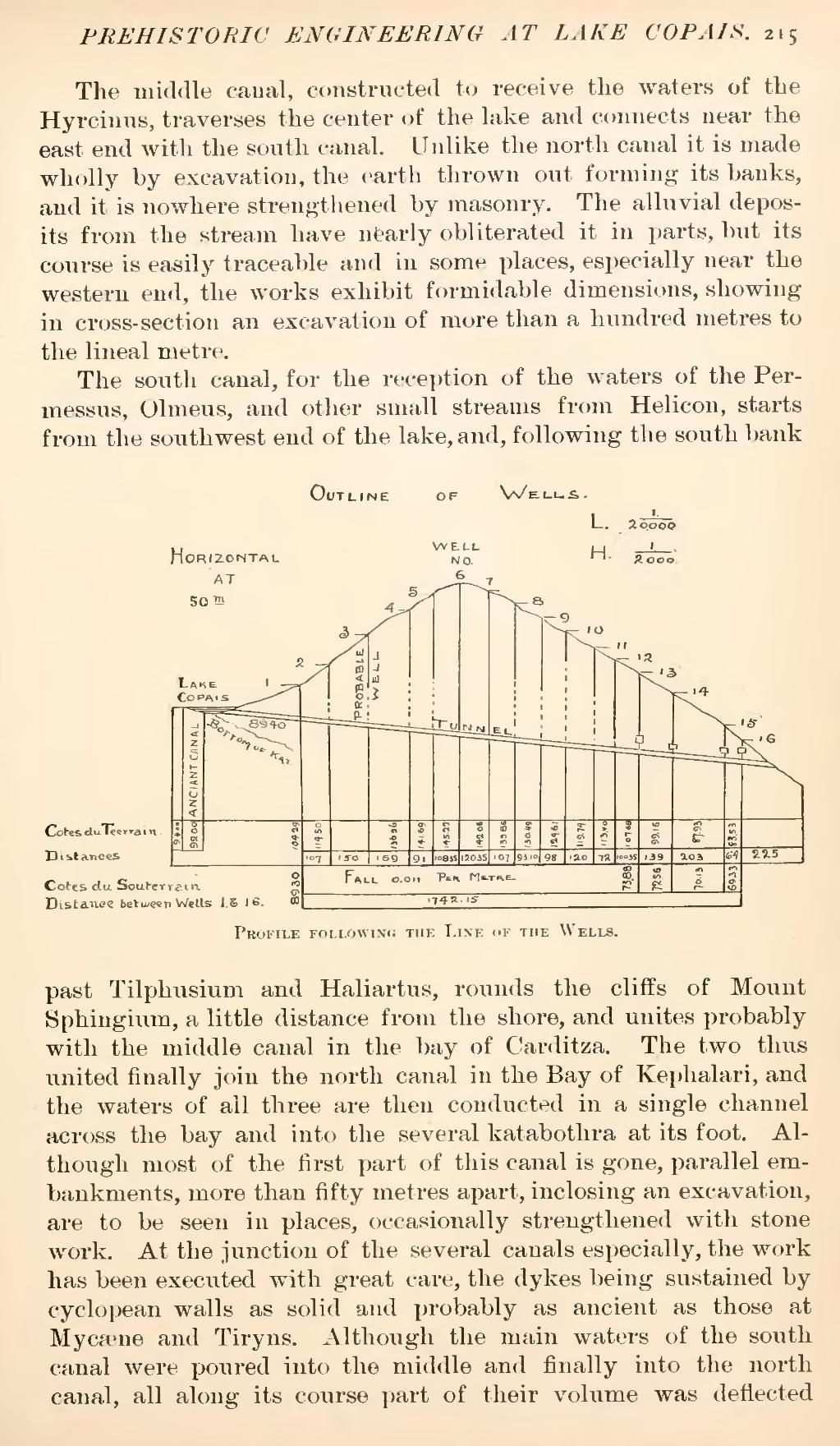The middle canal, constructed to receive the waters of the Hyrcinus, traverses the center of the lake and connects near the east end with the south canal. Unlike the north canal it is made wholly by excavation, the earth thrown out forming its banks, and it is nowhere strengthened by masonry. The alluvial deposits from the stream have nearly obliterated it in parts, but its course is easily traceable and in some places, especially near the western end, the works exhibit formidable dimensions, showing in cross-section an excavation of more than a hundred metres to the lineal metre.
The south canal, for the reception of the waters of the Permessus, Olmeus, and other small streams from Helicon, starts from the southwest end of the lake, and, following the south bank

Profile following the Line of the Wells.
past Tilphusium and Haliartus, rounds the cliffs of Mount Sphingium, a little distance from the shore, and unites probably with the middle canal in the bay of Carditza, The two thus united finally join the north canal in the Bay of Kephalari, and the waters of all three are then conducted in a single channel across the bay and into the several katabothra at its foot. Although most of the first part of this canal is gone, parallel embankments, more than fifty metres apart, inclosing an excavation, are to be seen in places, occasionally strengthened with stone work. At the junction of the several canals especially, the work has been executed with great care, the dykes being sustained by Cyclopean walls as solid and probably as ancient as those at Mycæne and Tiryns. Although the main waters of the south canal were poured into the middle and finally into the north canal, all along its course part of their volume was deflected

